One of the most visited countries in the world, England offers almost endless possibilities for things to see and do.
Big Ben
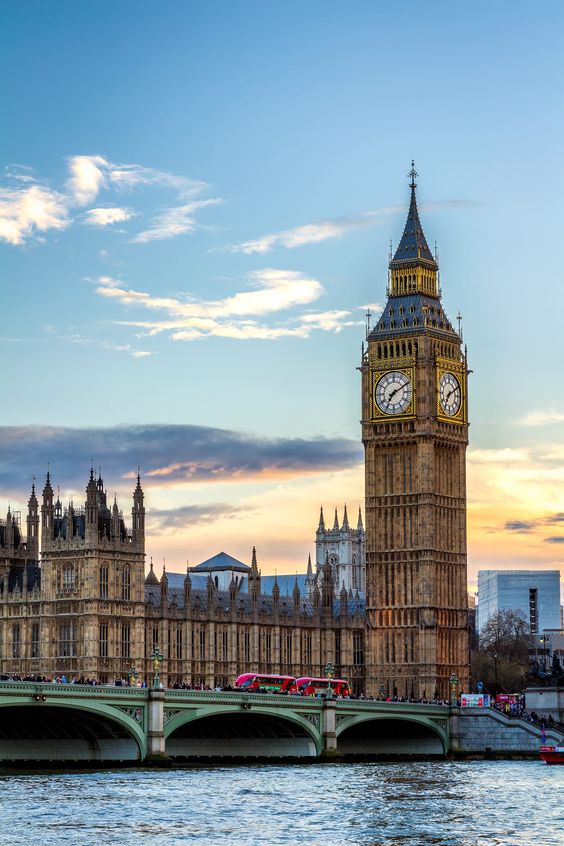
Big Ben is the nickname for the Great Bell of the clock at the north end of the Palace of Westminster in London.
The name of the clock-tower refers to the huge bell that is situated in the tower. The tower is a part of the Palace of Westminster that is situated by the river Thames. Nowadays, Big Ben is a national symbol which delights the eye of any citizen and tourist. The big clock officially started working on 31 May 1859. It is said that the monument was named after Sir Benjamin Hall who controlled the work of the bell. In course of time Big Ben changed its function. Once it used to be a prison. During the Second World War in 1941 the main part of the Houses of Parliament was destroyed but the clock-tower remained and continued to keep time. The sound of the clock even became a symbol of hope during the war. Recently, for the sixtieth anniversary of the Queen’s Elizabeth reign the Parliament decided to give her grace Big Ben as a gift. It was officially called the “Elizabeth Tower” but then the name was changed to the “Clock Tower”. Consequently, today “Big Ben” is only the name that is spread among public. None the less, Big Ben is well-known to everyone, even to those who have never been to London. The tower is a symbol of London that is loved both by citizens and tourists. There are a lot of souvenirs that look like Big Ben. The Clock Tower is closed for visitors but it is possible to arrange for a visit to the top of it.
Buckingham Palace
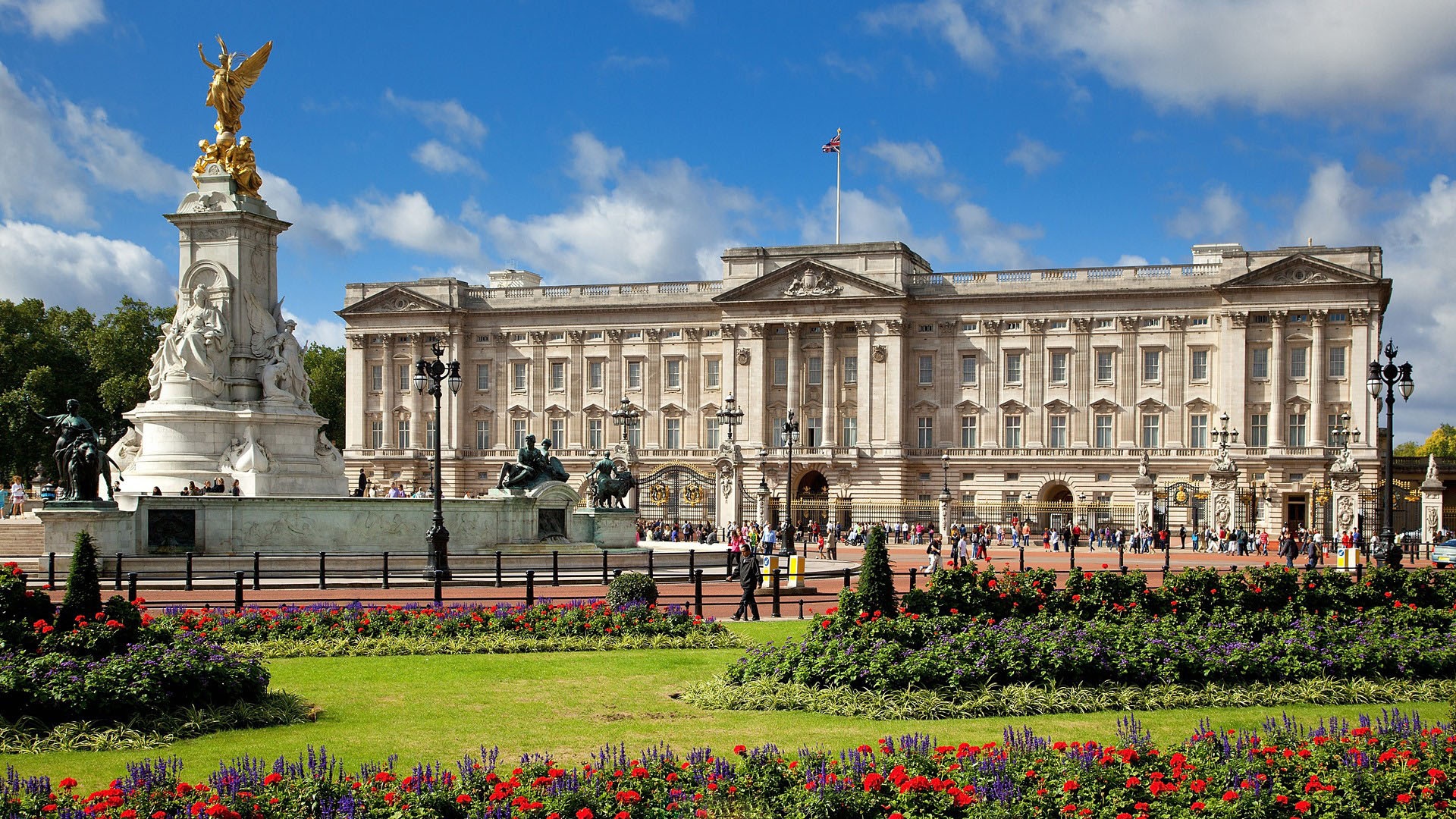
Buckingham Palace is located in the heart of London. It is the place where the Queen lives. It also serves as a place for administrative work and official receptions. When the Queen is at home, Londoners and visitors to the capital can see the Royal standard flying over Buckingham Palace. British monarchs have lived in Buckingham Palace since 1837 when Queen Victoria moved there.
The interior of the Palace contains more than seven hundred rooms. It has the Queen’s Gallery, a cinema, a swimming pool, a post office and a police station.
About four hundred people work in Buckingham Palace. They are chefs, cleaners, drivers and gardeners. There is special staff that looks after the three hundred clocks, expensive pictures and statues in the palace.
Buckingham Palace’s garden covers 40 acres. There is a helicopter landing area, a lake, and a tennis court in the garden. It is home to 30 different species of birds and more than 350 different wild flowers, some of which are extremely rare.
The palace is guarded by four divisions of Foot Guards wearing a special uniform of red jackets and black hats. The morning ceremony of Changing of the Guard is still very popular with tourists. They enjoy watching the guards marching in front of Buckingham Palace.
Until 1992, the public could only watch the magnificent palace from outside and wonder what was within. Today some of the rooms can be visited during the Queen’s annual trip to Scotland in August and September.
Westminster Abbey
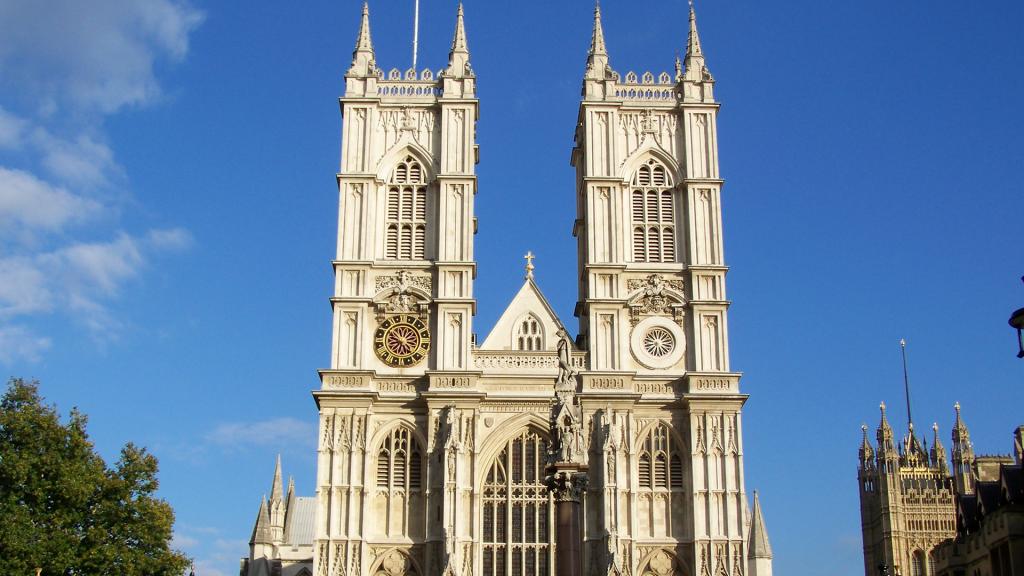
Westminster is considered to be a political centre of the city (London) where many offices are placed. However, the main part of Westminster is obviously the Abbey. It is located near the Houses of Parliament. Westminster Abbey is a place where all English kings and queens were crowned and Royal wedding ceremonies took place.
In addition, many royalties and great people are burried there: Queen Elizabeth I, William Shakespeare, Charles Darwin, Isaac Newton, Bernard Show, Lord Byron, Walter Scott and many others. According to the ancient tradition, the church was founded by St.Peter 900 years ago. Later it was rebuilt during the reign of Henry III. The original Westminster Abbey was built in the Romanesque style and then it was reconstructed in the Gothic style. The church is very high and has a magnificent exterior.
Every year the church attracts millions of people who come there to see the Abbey and visit the famous Poet’s corner. There is also a statue of Shakespeare there which appeared in 1741. Therefore, Westminster Abbey is an interesting place to visit. You can admire the glory of the church and see the tombs of outstanding people there.
Trafalgar Square
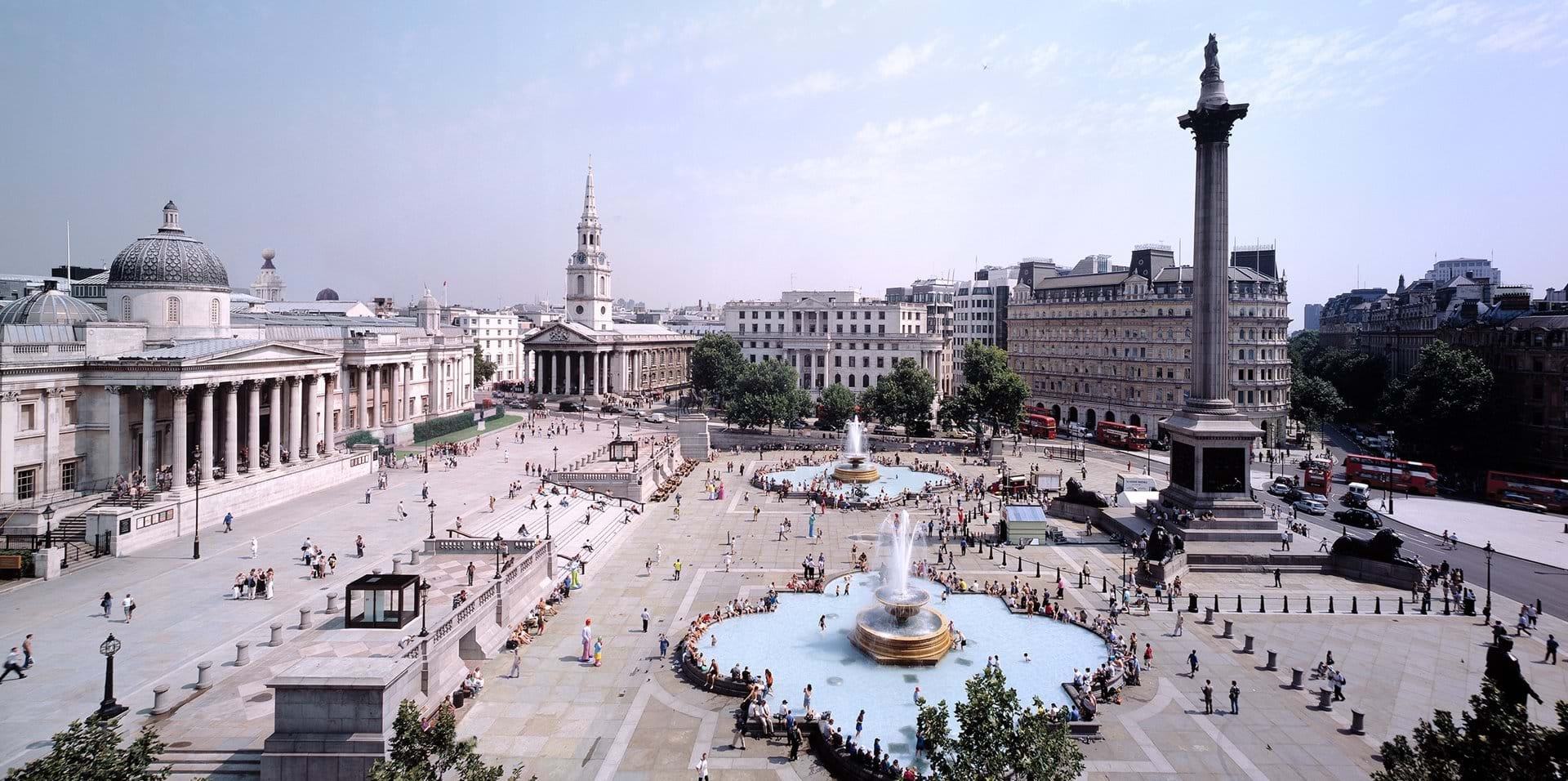
This is one of the nerve-centres of London. It was named Trafalgar Square to commemorate the historical naval victory won on the 21st of October 1805 by the British fleet under the command of Horatio Nelson over the combined French-Spanish fleet commanded by Villeneuve. The battle took place at Cape Trafalgar in the mouth of the Straits of Gibraltar and lasted several hours. Nelson was fatally wounded by a shot which broke his backbone. He died on board his flagship the Victory, but not before being told that he had won the battle.
Nelson’s Column, with the statue of Admiral Lord Nelson on top, rises in the centre of Trafalgar Square. This most impressive monument is 170 feet (about 52 m) tall. The statue of Nelson, placed facing towards the sea he loved, measures 17 feet (more than 5 m) in height.
To the north-east of Trafalgar Square there is the building that houses the National Gallery of Art – one of the most important Art Galleries in the world – and behind is the National Portrait Gallery.
Quite often the square becomes the location for meetings and in it crowds of Londoners congregate to celebrate political rallies. So it can be said that Trafalgar Square is the heart from which the beat is emitted to all the Londoners.
There are many pigeons in the square and Londoners like to feed them. Everybody knows that the dove is the symbol of peace all over the world.
The Globe Theatre
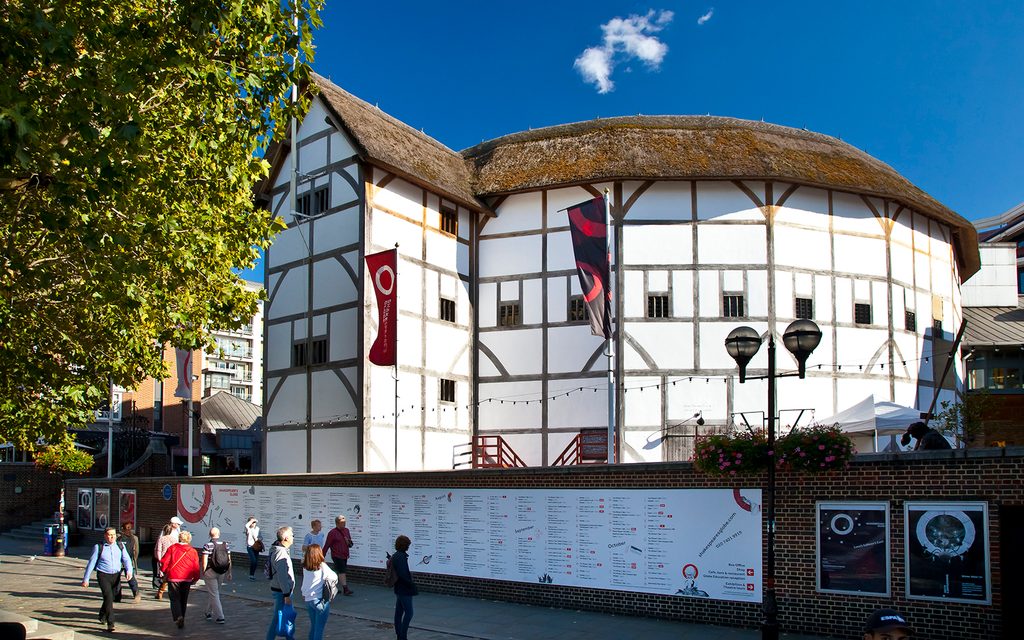
In 1949 an American actor Sam Wanamaker came to London and decided to visit the site of the famous Globe Theatre where Shakespeare had staged his plays. All he found, however, was a plaque on the wall of a brewery: «Here stood the Globe Playhouse of Shakespeare». Wanamaker was so shocked that he decided to rebuild the Globe.
It took many years to raise the money, get permission and find out exactly what the place looked like in the old days.
On June 12, 1997, Her Majesty the Queen opened the International Shakespeare Globe Centre, the recreation of shakespeare’s theatre. Unfortunately, Sam Wanamaker died in 1993 and wasn’t in the audience to see his dream finally come true.
Today you can visit the beautiful new Globe, and in summer you can even see a play performed as it would have been in shakespeare’s days.
Shows at the new Globe are staged in much the same way as they were then — with no scenery, spotlights or microphones. And as in shakespeare’s time, the crowd is free to join in, calling out to the actors and getting involved in the story.
Women now play on the stage of the Globe, but on special occasions you can experience shakespeare’s plays the way his audience would have: an all-male performance in original clothing and without interval. If it rains you’ll be given a rain hat so that you wouldn’t get wet to the skin.
The theatre’s artistic director, Mark Rylance, says that his dream is to reawaken a love of words — a theatre for the heart, not just the intellect».
Madame Tussauds
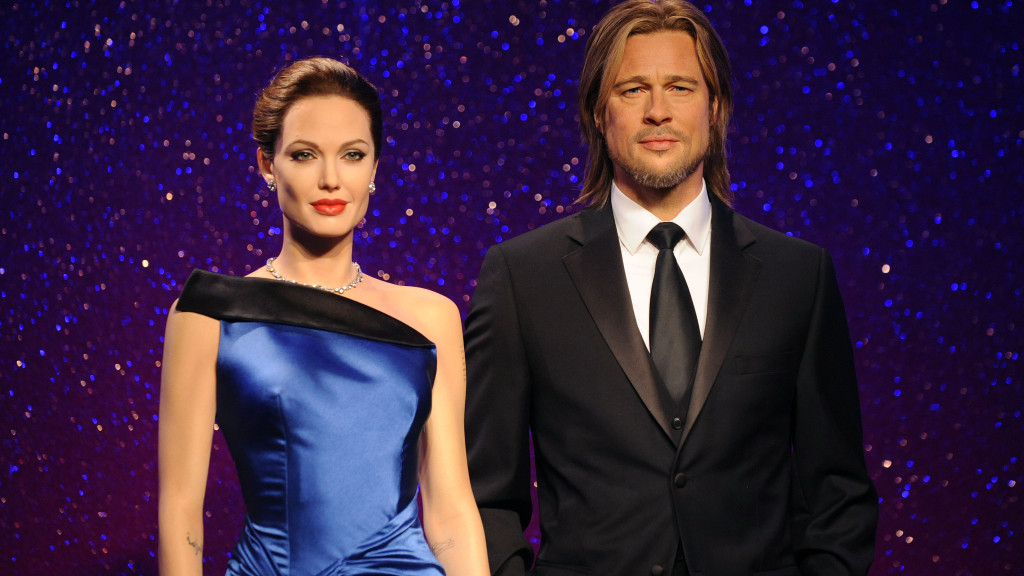
Madam Tussaud’s is the most popular and talked about wax museum in the world. There are wax models of the famous and infamous, both living and dead, from every walk of life.
Elvis Presley, the Beatles, the Rolling Stones, Marilyn Monro, Michael Jackson, Alfred Hitchcock, Charlie Chaplin, the British Royal family, Bill Clinton, Jack the Ripper… There is no other place where you can see all the celebrities at once, even if they are only wax figures. So if you want to rub shoulders with kings and queens or the latest pop stars, or probably with notorious criminals, this is the place to go.
The museum is situated in Marylebone Road, not far from the street which is famous as the home of the first great detective in fiction, Conan Doyle’s Sherlock Holmes.
There’s usually a long queue in front of the museum. No wonder! Many tourists would consider their trip to London worthless if they didn’t visit the famous Madam Tussaud’s. There are several halls at Madam Tussaud’s. Highlights include the Grand Hall, the Chamber of Horrors and “The Spirit of London exhibition.
The wax figures are standing and sitting, and sometimes even moving and talking. They are extremely realistic and when they look at you, their eyes sparkling, you often feel uncomfortable in their company. Computer controlled figures (they are called audioanimatronics) are especially popular with the visitors.
New models are being produced all the time while the old ones are quietly removed from display. Over the years hundreds of celebrities have made their way to Madame Tussaud’s studio. Most people agree to be portrayed, but some refuse. Mother Teresa was one of the few who declined, saying her work was important, not her person.
Hyde Park

Hyde Park is one of the eight Royal parks in London. When Londoners want to relax and get away to get some fresh air, to stroll, jog, ride a bike, or rent a horse they often come to Hyde Park. The 350-acre green space has been the site of great exhibitions, demonstrations, and concerts.
Hyde Park is not named for a person. The word «Hyde» is derived from an Anglo-Saxon word meaning a unit of land measurement. The land the park sits on had been owned by the monks of Westminster Abbey since before the Norman Invasion. But in 1536 when King Henry the 8th dissolved the monasteries as part of his break with the Roman Catholic Church he seized the property and turned it into a royal hunting preserve.
Stonehenge
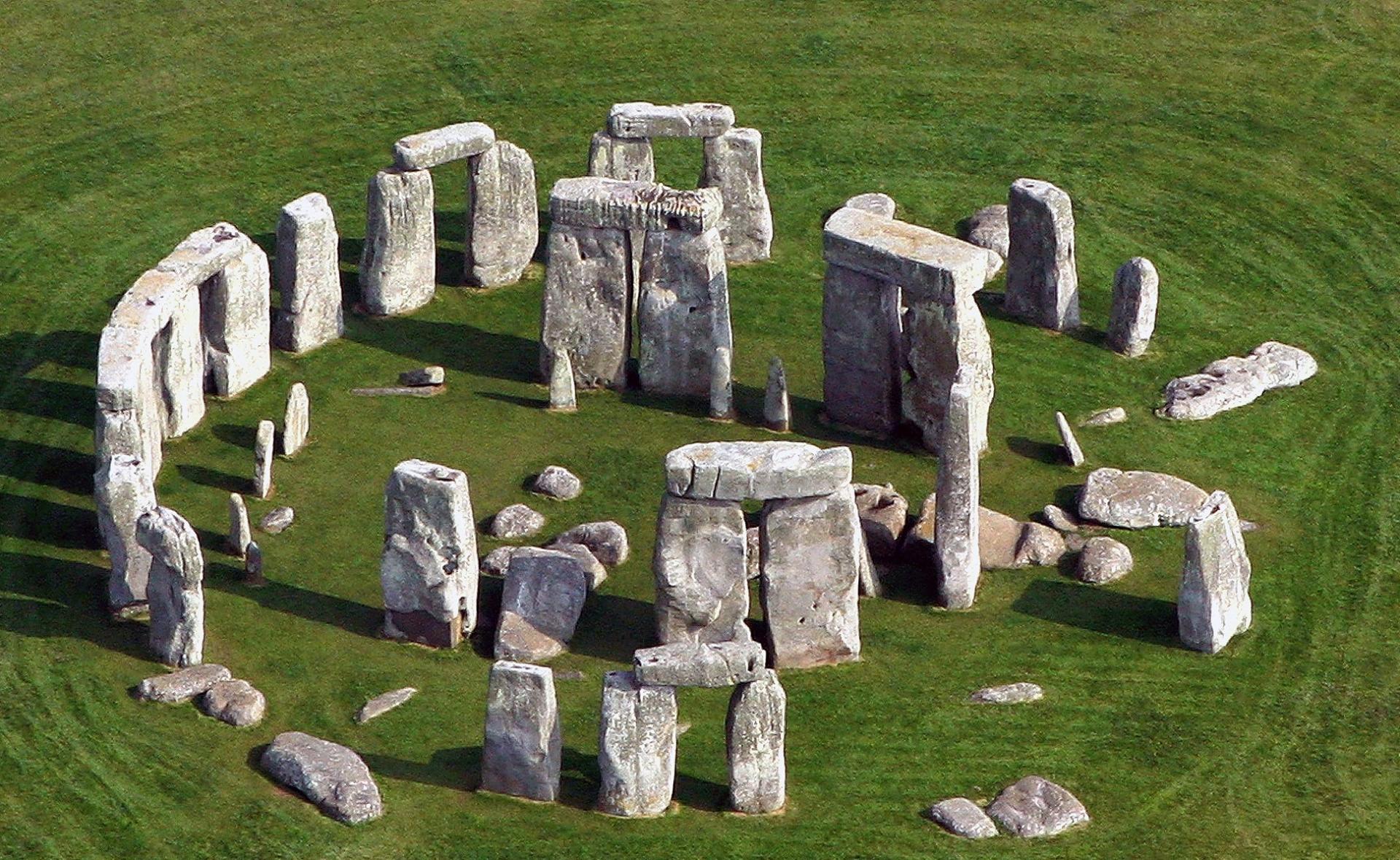
The Stonehenge stone circles are in England. People transported the first stones to this place about 5000 years ago. We don’t know a lot about Stonehenge. Who built it? How did they build it? Why did they build it? It’s a mystery.
People built Stonehenge with bluestones and sarsen stones. There were about 80 bluestones. They came from mountains 250 kilometers away. They are very heavy – some weigh about 4 metric tons. The sarsen stones are even bigger and heavier. About 4000 years ago, people transported them from 30 kilometers away.
How did people use Stonehenge? Maybe they used it as a cemetery or a place for studying the sun and the stars. Maybe it was also a temple. It’s still a special place for some people today. Every year, on June 21st, lots of people go to Stonehenge to celebrate the longest day of the year.
London Eye
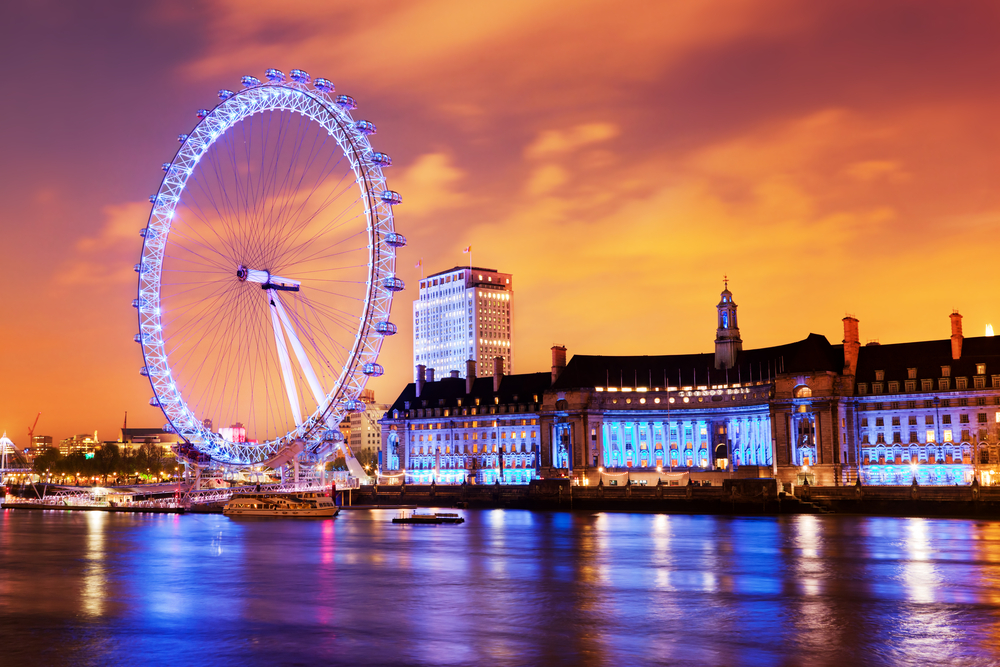
It is a giant Ferris wheel, located on the South Bank of the River Thames. Also known as the Millennium Wheel, London eye was the biggest Ferris wheel in the world until 2006, but even then it remains the largest in Europe. The ride on such tall wheel is called flight. The construction of the wheel ended in 1999 but it remained closed until 2000. When it opened to the public, many people finally could enjoy beautiful view on Thames. London eye offers tourists great observation point so suitable for the photography. In fact, the Millennium Wheel offered the highest public viewing point in London until 2013. Each capsule of the wheel also takes pictures of it’s passengers at the end of the flight. London eye is a great place to visit in London.
Tower Bridge
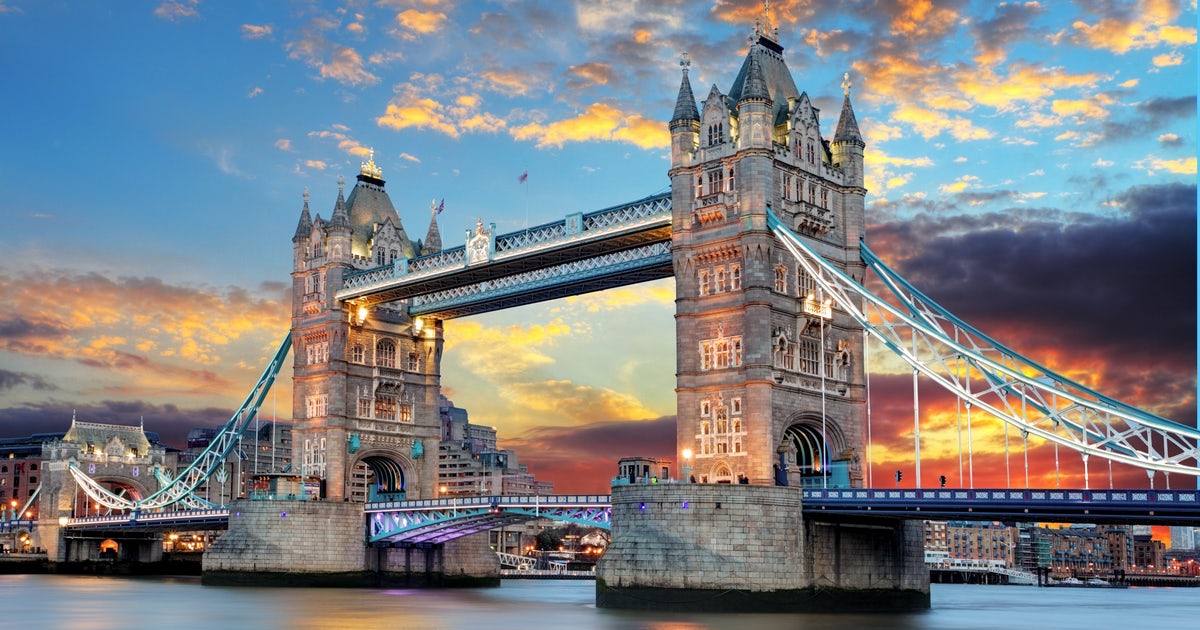
This bridge was built in 1894 and it is still in daily use even though the traffic in and out of the London wharves has increased to an extraordinary extent during the course of the 20th century.
Even today Tower Bridge regulates a large part of the impressive traffic of the Port of London. Due to a special mechanism, the main traffic-way consisting of two parts fixed to two hinges at the ends can be lifted up. In this way, the entrance and departure of extremely large vessels is possible, and it allows them to reach the Pool of London.
Nowadays the pedestrian path is closed. This footpath crossing which used to be allowed was by the upper bridge which connected the top of each tower, situated at a height of 142 feet above the waters of the famous Thames.
Tower Bridge commands wide and magnificent views of both the city and the river. After Tower Bridge, the wharves of London extend until Tilbury. The gigantic port of this city, which has one of the heaviest movements of ocean-going traffic in the entire world, occupies practically the whole bank of the Thames from Teddington. It is virtually impossible to get a complete idea of its colossal extention. In fact it is one wharf after another, apparently continuing endlessly.
There is one way to form a closer idea of the grandiosity of this port: to view it from Tower Bridge on a clear day.
St. Paul’s Cathedral
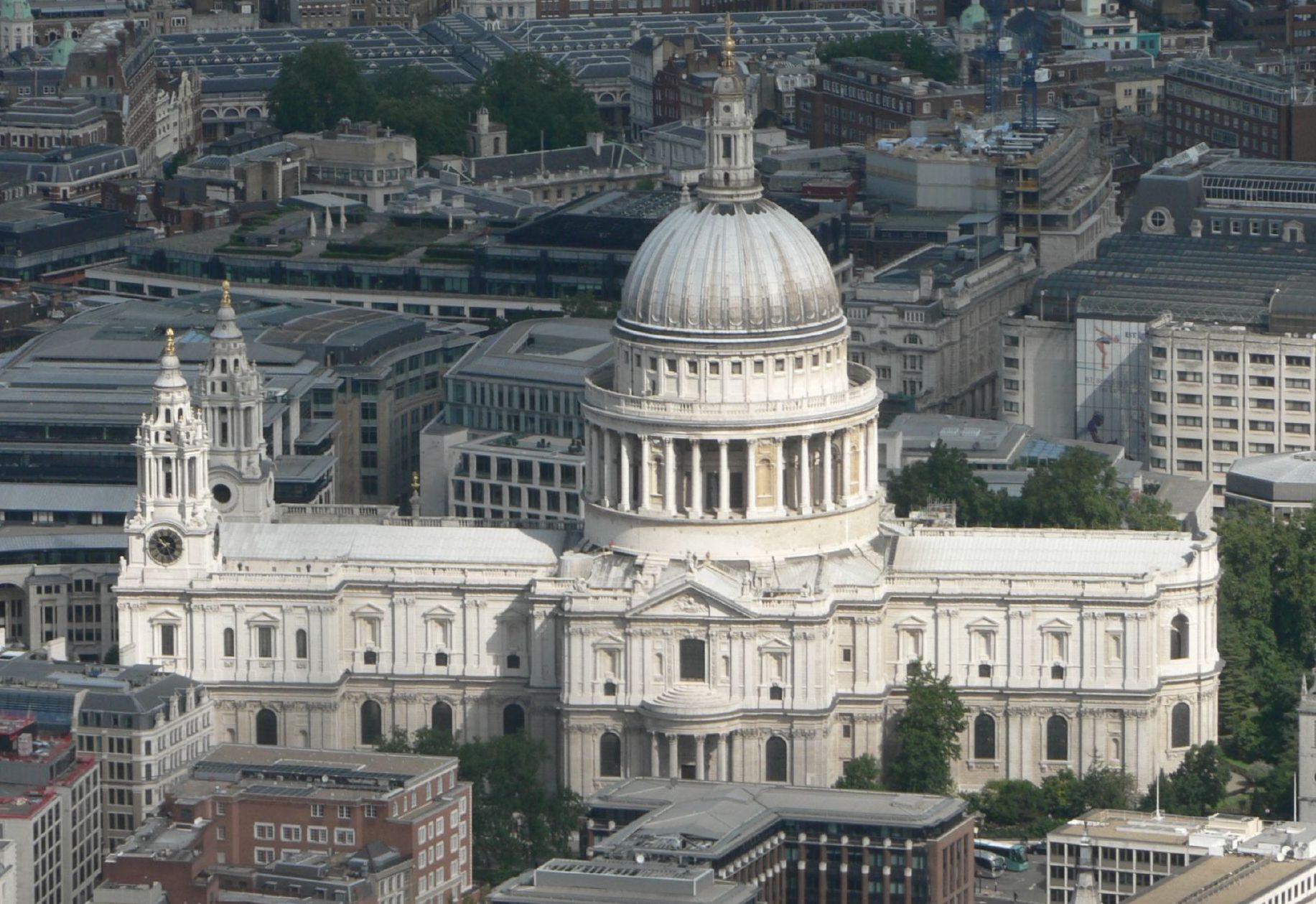
Everybody coming to London for the first time wants to see St. Paul’s Cathedral. This is the third cathedral with this name which London has had. The two others were burnt down, the first in 1086 and the second in 1666.
Christopher Wren was an architect who had already built many buildings. Now, in 1675, he started on his greatest work. For 35 years the building of St. Paul’s Cathedral went on, and Wren was an old man before it was finished.
From far away you can see the huge dome with a golden ball and cross on the top. The inside of the cathedral is very beautiful. After looking around, you can climb 263 steps to the Whispering Gallery, above the library, which runs round the dome. It is called this because if someone whispers close to the wall on one side, a person with an ear close to the wall on the other side can hear what is said. Then, if you climb another 118 steps, you will be able to stand outside the dome and look over London.
But not only can you climb up, you can also go down underneath the cathedral, into the crypt. Here are buried many great men, including Christopher Wren himself, Nelson and others.
British Museum
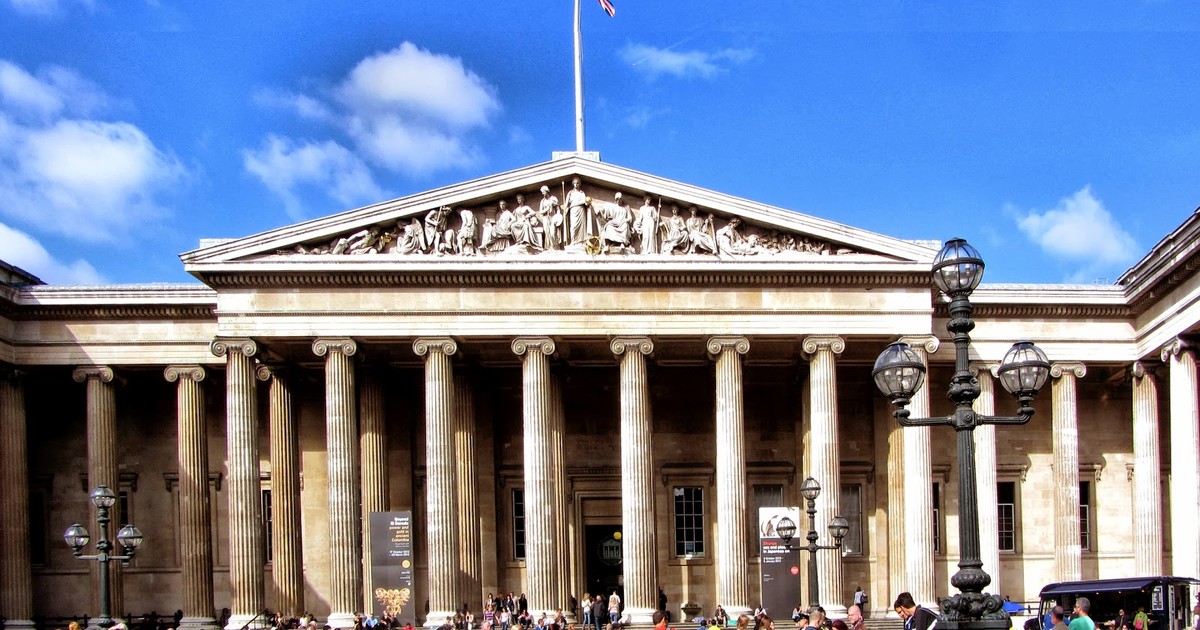
The British Museum is a museum in London, founded in 1753. It contains one of the world’s richest collections of antiquities and one of the largest libraries in the world: British Library.
The British Museum’s collection of seven million objects representing the rich history of human cultures mirrors the city of London’s global variety. It includes monuments of primitive and antique culture, Ancient East culture, the richest collection of engravings, pictures, ceramics, coins.
The British Museum library is now named the British national library. It was formed in 1973 from the British Museum library and other national collections. It has a copy of every book that is printed in the English language, so that there are more than six million books there. They receive nearly two thousand books and papers daily. The British Museum Library has a very big collection of printed books and manuscripts, both old and new. You can see beautifully illustrated old manuscripts which they keep in glass cases. You can also find there some of the first English books printed by Caxton. Caxton was a printer who lived in the fifteenth century. He made the first printing-press in England. In the reading-room of the British Museum many famous men have read and studied. Charles Dickens, a very popular English writer and the author of ‘David Copperfield’, ‘Oliver Twist’, ‘Dombey and Son’ and other books, spent a lot of time in the British Museum Library.
In no other museum can the visitor see so clearly the history of what it is to be human.
National Gallery

The National Gallery in London is the top art museum for classical painting. More than 2000 paintings of different art epochs from the 13th century up to the early 20th century are exhibited there. The art museum is divided into 4 areas and each of the area is dedicated to certain centuries. Those areas are split into numbered rooms which cover a special topic.
The entrance is free of charge.
Eden Project

The Eden Project is a popular visitor attraction in Cornwall, England. Inside the two biomes are plants that are collected from many diverse climates and environments.
The complex is dominated by two huge enclosures consisting of adjoining domes that house thousands of plant species, and each enclosure emulates a natural biome. The largest of the two biomes simulates a rainforest environment and the second, a Mediterranean environment. The attraction also has an outside botanical garden which is home to many plants and wildlife native to Cornwall and the UK in general; it also has many plants that provide an important and interesting backstory, for example, those with a prehistoric heritage.
Covent Garden
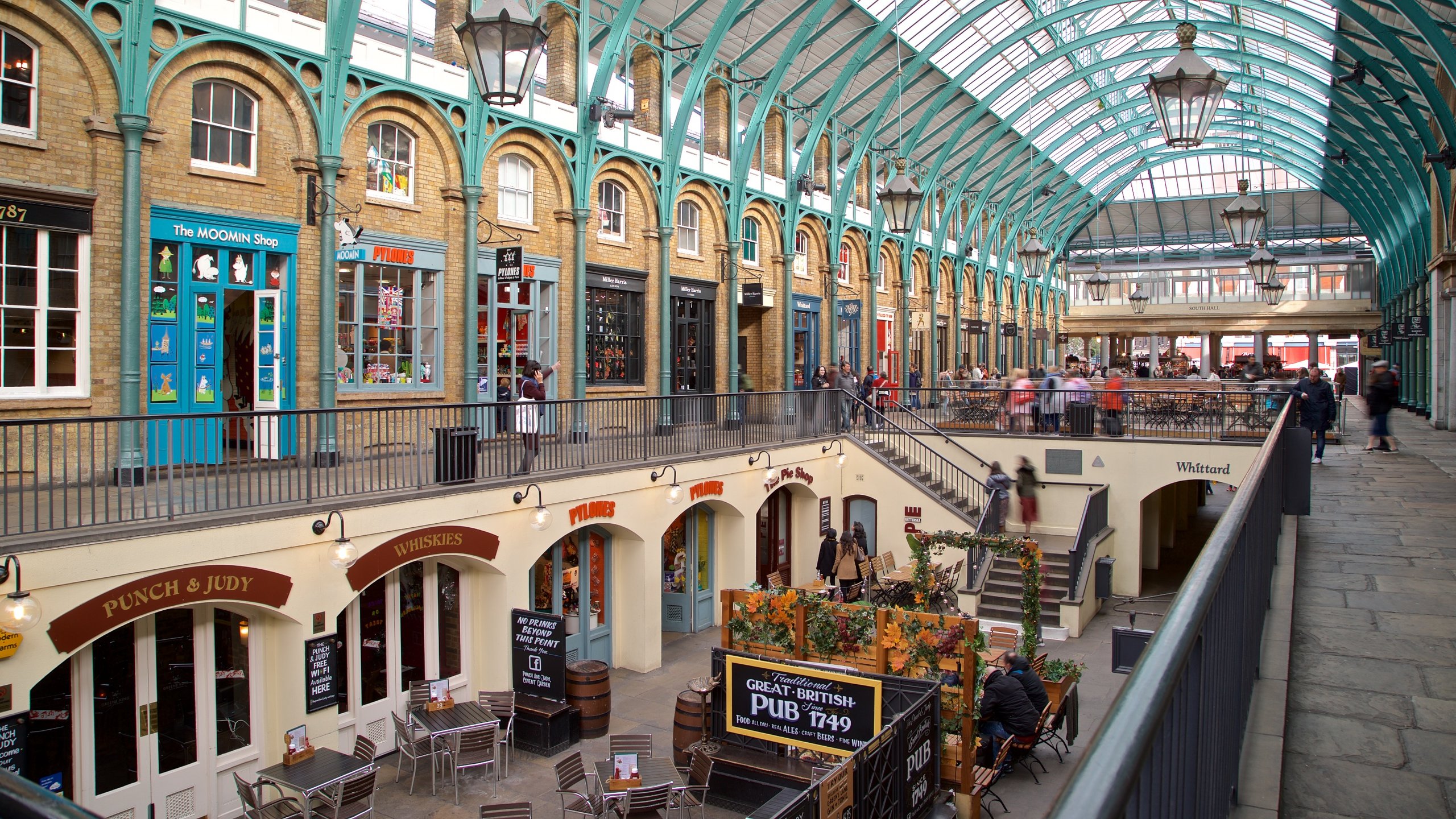
Covent Garden is the biggest market-place in Britain. If you come to Covent Garden in the afternoon, you’ll only see enormous buildings and a few tourists. But if you come here early in the morning, you’ll see hundreds of people buying and selling vegetables, fruit and flowers. Cars, vans, lorries are everywhere.
There are voices everywhere. Some people are carrying heavy boxes of fruit and vegetables. Covent Garden has been the most important market-place in London for 300 years. It was officially established by King Charles II in 1670. It was called Covent Garden because it was the garden of the monks of Westminster Abbey. At that time it was very small, and used only by Londoners.
Piccadilly Circus

Piccadilly Circus is the centre of night life in the West End. This is one of the most popular meeting points of London, probably second only to Trafalgar Square. It is actually quite small, and; most people are rather disappointed when they see it for the first time because they had imagined it would be much bigger.
Piccadilly Circus is a dynamic and picturesque place with a happy and lively cosmopolitan atmosphere. There stroll people who come from the most far-flung countries in the world, of all races, dressed in their national clothes. Groups of people like to gather around the foot of the statue of Eros, the god of love, work of Sir Alfred Gilbert. They form a brightly colourful picture. Piccadilly Circus is a West End shopping centre. There are many shops with big advertisements, belonging to different foreign firms there.
Loch Ness

Loch Ness, lake in Scotland. With a depth of 788 feet (240 metres) and a length of about 23 miles (36 km), Loch Ness has the largest volume of fresh water in Great Britain. It lies in the Glen Mor—or Great Glen, which bisects the Highlands — and forms part of the system of waterways across Scotland that civil engineer Thomas Telford linked by means of the Caledonian Canal (opened 1822).
The watershed of Loch Ness covers more than 700 square miles (1,800 square km) and comprises several rivers, including the Oich and the Enrick.
Like some other very deep lochs in Scotland and Scandinavia, Loch Ness is said to be inhabited by an aquatic monster. Many sightings of the so-called Loch Ness monster have been reported, and the possibility of its existence—perhaps in the form of a solitary survivor of the long-extinct plesiosaurs—continues to intrigue many.